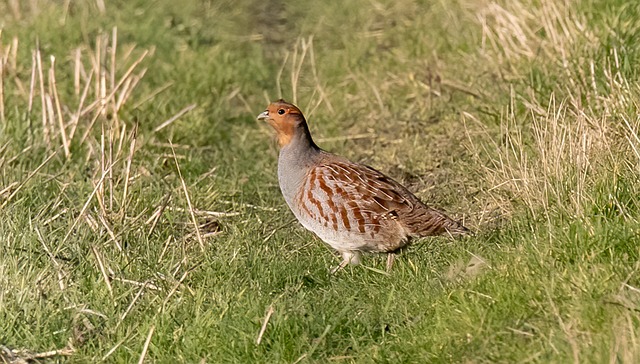Partridge, although less well-known than pheasant or deer, plays a key role in the preservation of ecological systems and is an indicator of the health of nature in a certain hunting ground. Also known as the “race”, the field partridge (Perdix perdix) is useful for farmers because it destroys insects such as ladybugs, grasshoppers and other pests, which cause great damage to crops. The partridge lives in flocks on plots with crops such as potatoes, grain and corn, and thanks to its ability to run quickly and its preference for areas with bushes, it successfully hides from predators.
The Polish partridge has an average size of about 35 cm, with a lifespan of three years. This bird usually stays in the fields in flocks of ten to twenty individuals. It is very resistant to low temperatures, but in conditions of extremely cold winters when insects are unavailable, the partridge becomes easy prey for predators or dies of hunger because it cannot find food under the snow. Although it manages to survive temperatures down to minus 30 degrees, higher mortality is observed in severe winter months. The largest population of partridges in Serbia is located in the south of the country. Here, the mild climate and the specific composition of arable and fallow fields provide them with favorable conditions for reproduction.
Partridge, in more detail
It is characterized by ash-grey feathers on the neck and chest, while males are characterized by an earth-colored beak, which distinguishes older males from younger ones. Her colorful feathers add to her beauty, and her wary nature allows her to quickly take cover when she senses danger. In nature, partridges live in flocks until the beginning of mating, when the birds separate into pairs during February. The males then instinctively defend the females, forming pairs that persist throughout the mating and brood care period. In April and May, females lay ten to sixteen eggs, and both parents actively participate in nesting.

Partridge hunting lasts from October 15 to November 30. However, due to the small size of the population in Serbia, a hunting season was introduced in 2021 for a period of three years. In many countries with developed agriculture, partridge pairs are deliberately introduced as a natural protection against pests. Research has shown that partridges are significantly more effective than chemical preparations in controlling insects. In this way, they contribute to the preservation of the natural ecosystem without damaging the soil.
The partridge is important for the ecological balance, which is why it is necessary to preserve it through protection from predators, poaching and hostile winter conditions. Hunters are invited to provide additional food in the field during “severe” frosts, which stabilizes the number of individuals in the hunting grounds. Also, with its specific advertising and colors, the partridge contributes to the aesthetic value of the hunting ground and the maintenance of ecological balance, making it not only useful but also a symbol of preserved nature.
Source: Farmer
Source: boljazemlja.com


